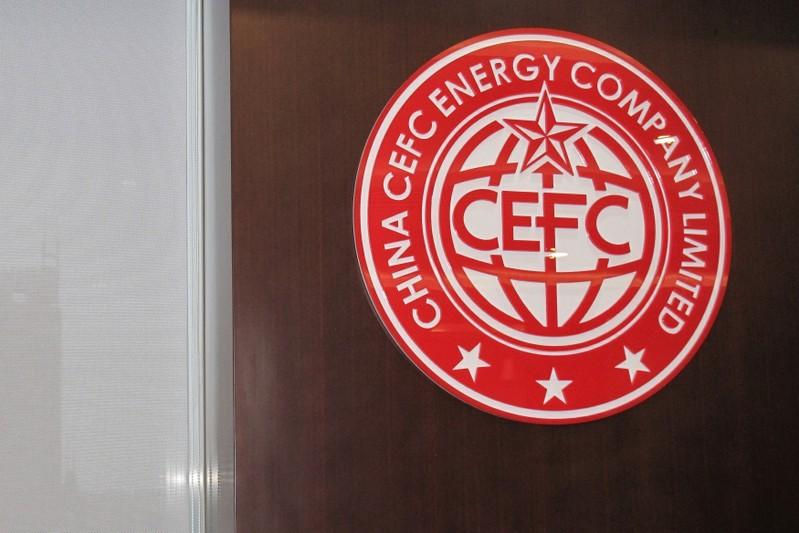CEFC Gets 1st Rosneft Shipments, As Russian Crude Exports To China via Kazakhstan Are Set To Grow
- Mariana Liakopoulou
- Feb 9, 2018
- 4 min read

On January 29, Russia’s majority state-owned oil company Rosneft announced it has initiated crude seaborne exports to CEFC China Energy, under a five-year deal for the supply of almost 61 (60.8) million tonnes of Russian crude oil to the private vertically integrated Chinese conglomerate. According to the long-term contract, signed by the two partners along with a strategic cooperation agreement in September 2017 during the ninth BRICS summit, and approved by Rosneft’s Board in November of the same year, CEFC will mainly purchase ESPO blend from the Russian Pacific port of Kozmino. Supplementary deliveries of Urals crude, from the Black Sea Novorossiysk port, and of Sakhalin Sokol crude, via De-Kastri oil terminal in the Russian Far East, have also been laid out in the document. In 2018, Rosneft seaborne volumes for CEFC are projected to reach 10 million tonnes.
The Chinese firm, who has acquiesced to the launch of collaborative projects with Rosneft regarding oil exploration and production in Western and Eastern Siberia, refining, petrochemistry, oil and oil products trade, as well as construction of a petrochemical complex in China’s Haiman island province, aspires to buy a $9bn-worth 14.16% stake in Rosneft from a consortium of Glencore and the Qatar Investment Authority, possibly through a $5bn loan issued by Russia’s VTB Bank. The five-year supply contract will help serve CEFC’s plans to make available cheaply transported ESPO oil quantities to China’s privately-owned “teapot” refineries. Furthermore, it could lead the Chinese corporation to outdo the multinational commodity trading company Trafigura in becoming Rosneft’s principal oil trading partner in the huge, investor-friendly Asian market.
In a parallel development, Rosneft CEO Igor Sechin stated that the company is considering an increase in oil supplies to China via Kazakhstan, with Transneft’s official representative Igor Demin later confirming that Rosneft had actually turned to Russia’s pipeline monopoly, in order for the oil transit to China via the Kazakh route to rise from 10 to 13 million tonnes per annum. Rosneft’s ambitious export strategy concerning the Chinese market involves expansion of those supplies up to 18 million tonnes per annum (360,000bbl/d) at a later stage. Such a move would result in the curb of European imports of Russian Urals oil, flowing by pipeline to Central Europe and by tanker to Northwest Europe from Primorsk, on the Baltic Sea, and to Southern Europe from Novorossiysk.
Rosneft’s oil supplies to China are mainly delivered via the Transneft-operated Eastern Siberia-Pacific Ocean (ESPO) oil pipeline and its extra spur towards the Chinese city of Daqing. Furthermore, in 2016, China bought over two thirds of Russian ESPO cargoes transshipped from the eastern port of Kozmino.
Secondly, the Atasu-Alashankou overland oil pipeline, as well as the railway option through Kazakhstan, serve as additional export routes for Russian crude deliveries eastward. Around 3 million tonnes of the pipeline’s overall upgraded capacity of 20 million tonnes are used for Kazakhstan’s own oil exports to China. In January 2017, Rosneft and China’s National Petroleum Corporation (CNPC) co-signed a complementary agreement on the increase of oil volumes headed to China through Kazakhstan and on the extension of a bilateral contract, concluded in 2013, up to December 31st 2023. An overall of 70 million tonnes of oil is scheduled to have been delivered to China by that time.
Since the past decade, Rosneft has been systematically cultivating petroleum relations with China, in an attempt to fulfill the Russian government’s strategic goal to strengthen energy cooperation with Asia-Pacific countries. The company’s continuous interaction with CNCP and Sinopec, both in the Russian upstream and abroad, the acquisition of $500M worth of shares by CNPC in the oil giant, the gradual consolidation of Rosneft’s position in the Chinese downstream and, lastly, the recent expression of interest to multiply supplies to China, both via Kazakhstan and via the implementation of the relevant accords with CEFC and CNPC, all signify a remarkable progress in the Sino-Russian energy dialogue.
At the same time, Kazakhstan also eyes the Chinese market as a viable export alternative for its oil reserves. The Kazakhstan-China oil pipeline came on stream in 2006, while China’s oil imports from Kazakhstan are said to have increased almost tenfold between 2005 and 2008. As crude prices modestly crept up following OPEC/non-OPEC output cuts policy, piped crude oil imports from Kazakhstan to China hit a record high (12.3 million tonnes) in 2017, the Kazakhstan-China pipeline operator company has said.
Therefore, it becomes evident that regional competition has substantially changed from a situation where China and Russia were struggling for a share in Caspian resources to a newly established reality, in which Russia and Caspian Sea littoral states are striving to exert greater influence over the energy-thirsty Chinese market. Furthermore, despite CNCP forecasts about a boost in domestic natural gas production by between 6% to 8% per year through 2020, a fact that, in combination with growing imports of piped gas and LNG (up by 46.4% in 2017, at 38.13 million tonnes), is of crucial importance for the country’s fight against air polluting emissions, China doesn’t appear willing to envision its future away from oil any time soon. This is shown by both the solid alliances with Kazakhstan and Russia, who has retained the crown from Saudi Arabia as China’s top crude oil supplier for the second year in a row in 2017, and the seemingly emerging Sino-Arab partnership, since PetroChina and Sinopec are reportedly interested in buying the whole 5% of Saudi Aramco, opened up in the state oil behemoth’s IPO.
Available online at: http://www.caspianpolicy.org/energy/caspian-energy-insight-february-7-2018/#2







Comments